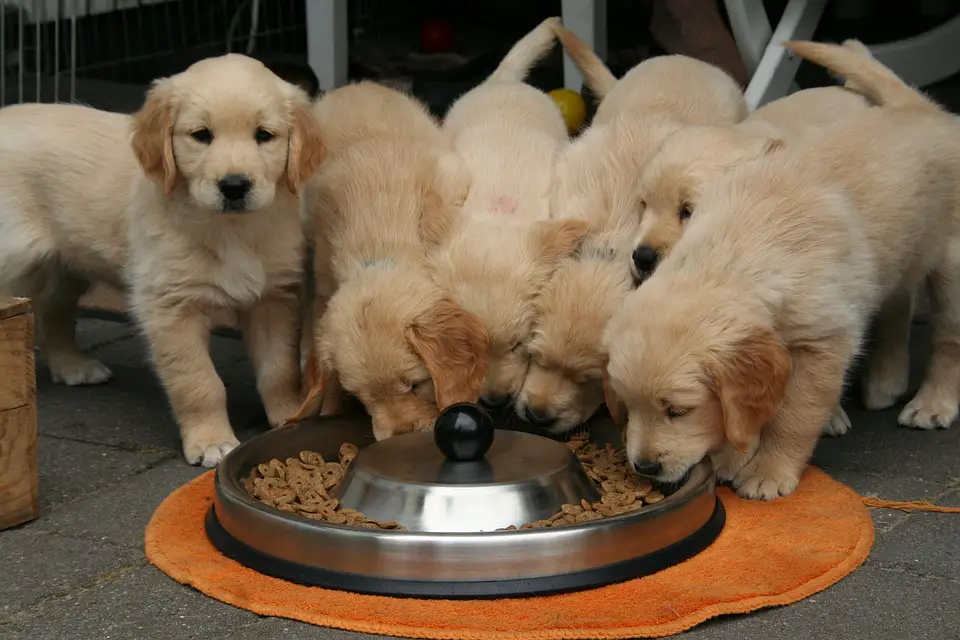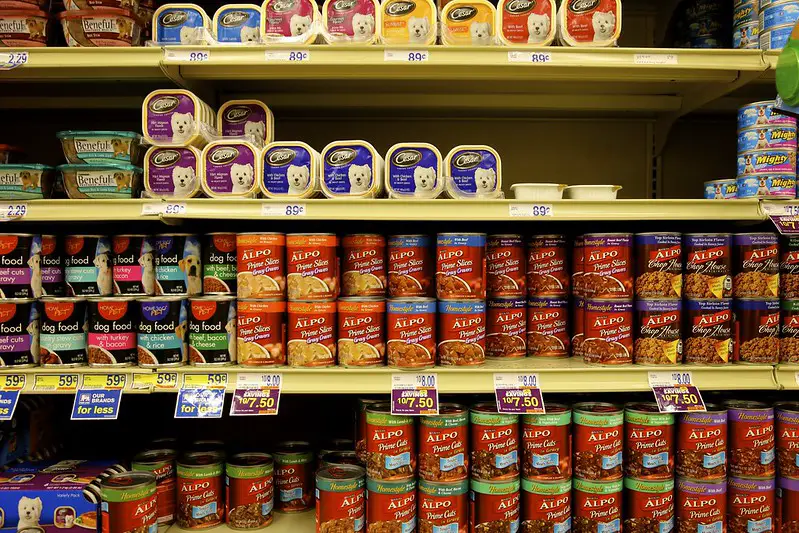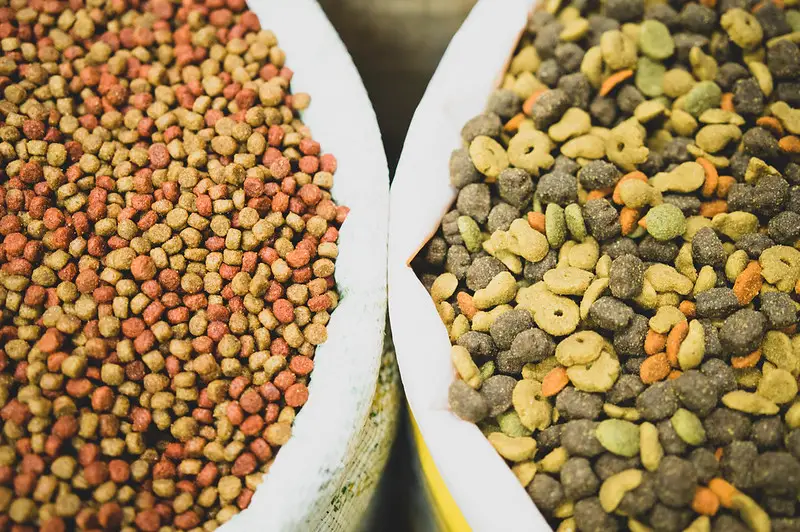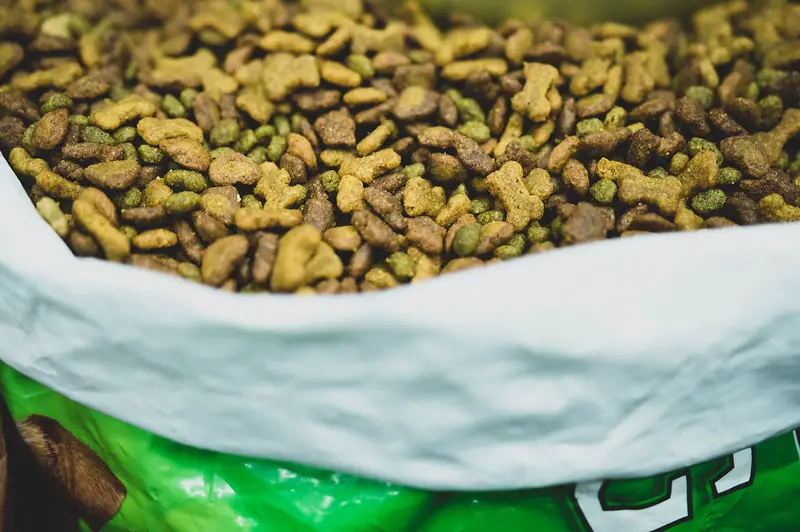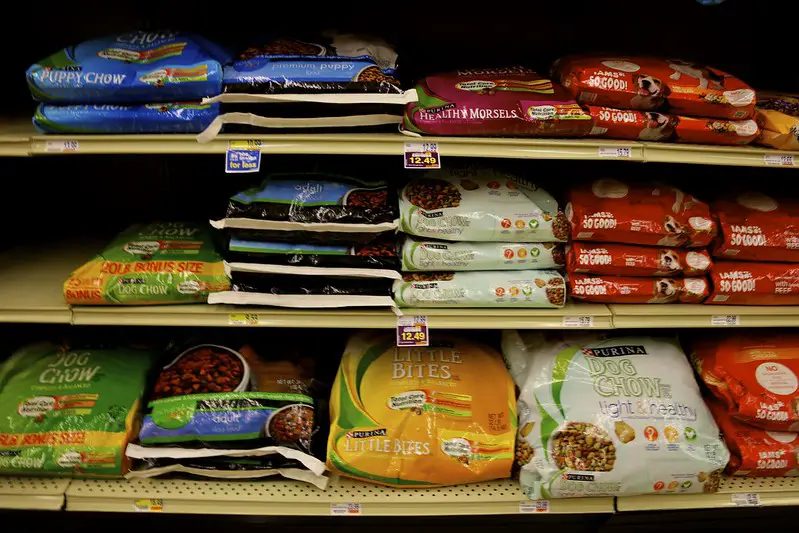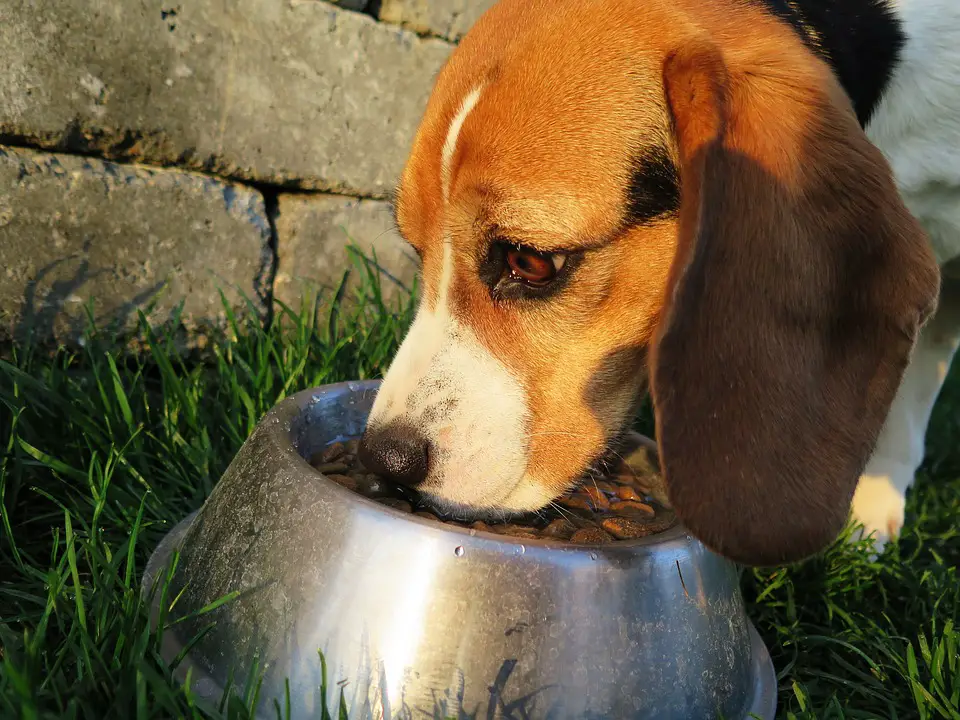Table of Contents
*This post may contain affiliate links. As an Amazon Associate we earn from qualifying purchases.
image source: pixabay.com
When you have a pet, you want to take care of them and make sure you are meeting all of their needs, including dietary needs. When it comes to feeding your dog the proper food, you may be wondering what is dog food made of; and you should always know what is in the dog food you are serving them. That is why we checked into what goes into dog food to help you separate the good from the bad.
What Is Dog Food Made of?
image source: flickr.com
So, what is dog food made of? In the U.S, more than 700 million tons of pet food is made each year, and almost all of it follows the same basic ingredients of meat and meat byproducts, cereals, grains, vitamins, and minerals.
Of course, the amount and quality of these ingredients, as well as the taste of the pet food all varies. Additionally, some pet foods add in fillers that can be harmful to an animal’s overall health. That is why it is important to read what the top dog food brands put in their foods so that you can choose the best one for your pets.
The Materials Used to Make Dog Food
image source: flickr.com
Ingredients in dog food vary, depending on the dog food type and brand. The biggest difference can be found between canned and dry pet foods. Canned food contains between 70 and 80 percent moisture and is made from fresh meat products. Dry dog food contains no more than 10% moisture. Semi-moist foods require a binding agent, which is usually made from gels, salts, soybean flakes, dried whey and skim milk, and cereal flours.
Primary Ingredients
The main ingredient in dog food is meat byproducts, feed grains, and soybean meal. Dry foods also contain corn gluten feed, meat and bone meal, animal fats, and various oils. Animals used in the meat ingredients include horses, livestock, and even euthanized house pets.
The National Animal Control Association estimates that around 5 million euthanized pets are used in dog foods, each year, and they get listed as bone meal or meat in the ingredient lists. The animal parts used in pet food include bones, cheek meat, intestines, stomach tissues, and other unusable parts.
Fillers and Extras
Cereal grains, like corn meal and barley, are often used for consistency and to bring down the cost of raw materials. Water, meat broth, blood, salt, and gelling agents are often used, too, for flavor, texture, and moisture. Starches and other thickeners are also used, and flavor is enhanced with yeast, protein, fat, sweeteners, and concentrated flavors. Most dog food manufacturers will add vitamins and minerals, since many of them are lost during processing.
Making Dog Food
The way dog food is made is very similar to how processed human foods are made. First, the meat must be separated into water, fat, and protein components. This process usually happens at a plant outside of the pet food company, and the product is shipped to the company. The meat then goes through a grinding and cooking process. After that, it is mixed with the other ingredients and shaped into form, often using heat, steam, and water to assist.
Canned dog foods have a shelf life of three to five years while dry dog food has a shelf life of 10 to 12 months. There are other differences in wet and dry foods, such as the process in how they are made.
Wet Food Versus Dry Food
Dry dog food provides the most calories for pets across the world and is made through different processes, but the most popular is called “extrusion” and is also the way most cereal is made. The basic steps are these:
- 1Ingredients are mixed together in a blender until they form a moist dough.
- 2The dough is heated and cooked under intense pressure.
- 3Once out of the processor, the kibble expands.
- 4The kibble is dried in an oven; then it is cooled.
- 5The kibble goes through a machine that sprays on a protective coating and flavor enhancer.
- 6It gets packaged.
Wet food is often more regulated because dog food companies must follow the same federal regulations that human food companies must adhere to. The process for making wet food is as follows:
- 1Ingredients are added to a mixer.
- 2Clean empty containers are filled with precise amounts.
- 3Lids are applied and the containers are sealed.
- 4Sealed containers are cooked.
- 5Containers are cooled.
- 6Labels are applied.
Regulation and Quality Control
Both federal and state laws and regulations apply to dog food, including ingredients, manufacturing, and labeling. At the federal level, pet food labeling and advertising are regulated by the FDA and FTC. To meet all requirements:
- Products must be pure
- Products must be free of harmful substances
- Products must be labeled accurately
- Canned products must use low acid canning
- Labels must identify the product as dog or cat food
- Name of manufacturer or distributor must be listed
- Brand name cannot be misleading
- Calories per serving must be listed
- Certain percentages should be followed, such as some foods must contain at least 25 percent meat
- Ingredients must be listed in descending order of predominance
The USDA controls meat quality and determines which animal meats can be used in pet foods. The FDA regulates ingredients and bans medications or antibiotics in dog foods. The amount of moisture allowed in foods is also regulated.
There are specific organizations, such as the American Animal Hospital Association, that monitor the safety of pet foods, the various brands, and the ingredients used on both short and long term health of pets.
The Ugly Side of Pet Food
image source: flickr.com
Converting animal waste into animal food is a great idea, in theory, for using up those byproducts that would otherwise be tossed out. However, there is an ugly side to the pet food industry. Even with proper regulation, some of these meat products can contain toxic waste.
Pesticides can be found in dead livestock, fish can contain heavy mercury levels, dead pets are often ground with flea collars still attached, antibiotics are found in much of the animal waste, and drugs that have been given to euthanize animals have also been found in rendered meat products. Metal contaminants have even been found from surgical pins, pet collars, and ID tags.
The following ingredients are often used in pet foods, and it’s legal to use them:
- Slaughterhouse waste
- Corn cobs, stalks, mill sweepings
- Diseased and disabled farm animals
- Road kill
- Spoiled supermarket food
- Euthanized cats and dogs
- Dead zoo animals
- Restaurant grease
When you question what is dog food made of, you may not consider that these ingredients or harmful chemicals can end up in your pet’s food; but they do. Other things to consider about your pets food:
- Kibble does not clean your dog’s teeth
- Feeding them the same food each day can limit their nutritional absorption
- Kibble may be cheaper, but it is not better than canned food
- Corn, as a cheap filler, can cause irreparable harm to pets
Choosing Quality Pet Food For Your Dog
image source: flickr.com
It is important for pet owners to read all labels carefully and research quality pet food companies. It is important to remember that all pet foods are highly regulated and pets can survive off of meat waste products that would otherwise make humans sick, so you cannot base your pets diet solely on what you would eat.
Know Your Names
Additionally, the way pet foods are labeled can be confusing because they are listed by their chemical compound and not as their commonly known names. If you need help in clarifying the ingredients on the labels, check out these commonly misunderstood ingredients:
- Sodium selenite – Selenium
- Pyridoxine hydrochloride – Vitamin B6
- Biotin – Vitamin B7
- Menadione sodium bisulfite complex – Vitamin K (potassium)
- Manganous oxide – Source of manganese
All of these are great vitamins and minerals for your pet to have, but based on their chemical names, they sound scary. Learning to read the ingredients will help you choose a quality food for your pet.
Do Your Research
While not all dog foods are safe, and there will be time dog foods are recalled for contaminants, they are as safe as human food. The key is knowing what you are buying and watching for recalls when they do occur. Research and buy from reputable brands.
Know Your Dog
Other things to consider when choosing quality food for your pet include your dog’s age, activity level, breed, and general health. A small dog will have different nutritional needs than a large breed dog, just as a puppy will have different needs than a senior dog. For this reason, dog food companies make formulas for small, medium, and large breed dogs as well as dogs of different ages and activity levels. Dog food companies even make diet foods for dogs who need to lose or gain weight.
Conclusion
image source: pixabay.com
Ask your vet what would be a good choice in dog food for your pet based on their individual health needs. Some dogs may need to be grain-free and others may need lean food.
If you can, consider making your dog’s food. It is a myth that dogs cannot eat human food as most human food is safe for dogs. What is dog food made of? It can be made of the same things you eat, with a few exceptions. If this is the route you prefer, research the best ingredients, skip the seasoning, and stick with a fresh, homemade diet for your four-legged companion, that way you know exactly what is dog food made of.

